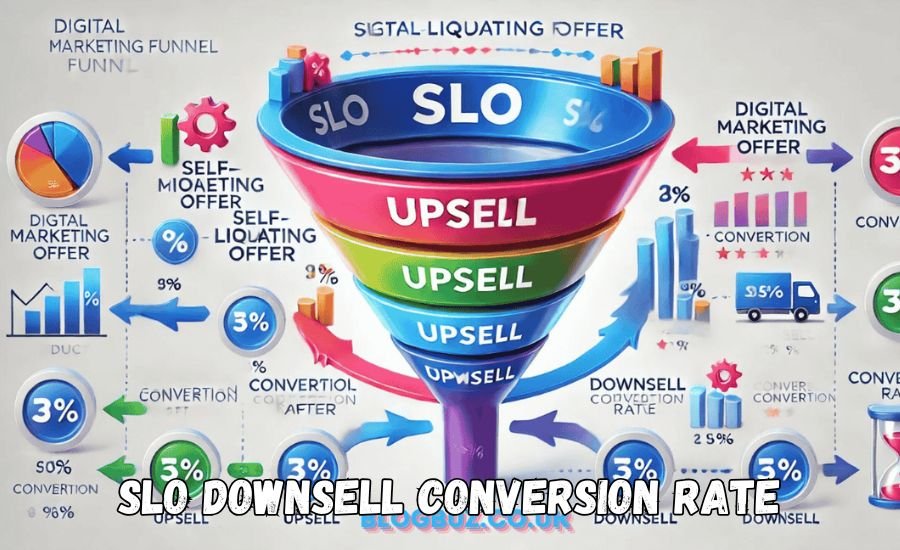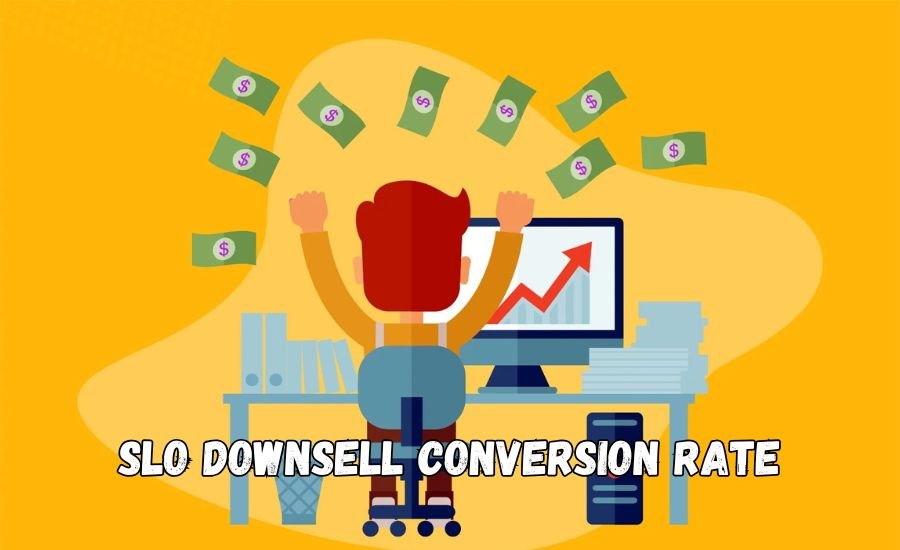In today’s competitive digital landscape, businesses need every opportunity to maximize revenue and optimize customer acquisition strategies. One such technique, the Self-Liquidating Offer (SLO) and downsell approach, has emerged as a key player in boosting sales and reducing customer loss. However, the real challenge lies in optimizing the SLO downsell conversion rate, a metric that tracks how effectively businesses convert customers who decline a high-ticket upsell but opt for a lower-priced alternative. In this article, we will explore the strategies, importance, and best practices to improve this rate and ensure that you’re squeezing every ounce of value from your sales funnels.
What is an SLO (Self-Liquidating Offer)?
An SLO (Self-Liquidating Offer) is a low-cost product or service offered at the beginning of a sales funnel, designed to cover customer acquisition costs. The primary purpose is to “self-liquidate” by recouping the marketing and advertising expenses right from the start. This type of offer gives businesses an edge in that the initial sale—while perhaps small—breaks even with customer acquisition costs.
For example, a business might offer a $10 eBook, which helps offset the cost of acquiring that customer through paid advertising. The goal here isn’t necessarily profit but to bring leads into the business, building a relationship with the prospect in hopes of upselling more expensive products later.
Understanding the Downsell in Sales Funnels
A downsell is a lower-priced product or service offered to a customer who has declined a higher-ticket item, typically after an upsell. This technique is vital in saving a potential sale and still converting a lead into a paying customer, albeit at a lower price point. It ensures that even if the customer isn’t ready to make a larger financial commitment, you don’t lose them entirely.
For instance, if a customer passes on a $500 coaching program, a downsell could be a $100 eBook or course that addresses a similar need. It’s all about salvaging the sale and nurturing the customer for potential future upsells.
What is the SLO Downsell Conversion Rate?
The SLO downsell conversion rate measures the percentage of customers who decline an upsell but agree to a downsell offer. It’s calculated as:
SLO Downsell Conversion Rate = (Number of Downsell Acceptances / Number of Upsell Rejections) x 100
This metric is crucial for businesses that use advanced sales funnels because it indicates how effectively they are converting potential customers who might otherwise leave the funnel after declining the primary offer. For example, if 100 customers decline an upsell, but 20 of them accept a downsell, your downsell conversion rate is 20%.
Why Does the SLO Downsell Conversion Rate Matter?
Maximizing the SLO downsell conversion rate is important for several reasons:
- Revenue Optimization: Even when a customer turns down the upsell, you still generate revenue through the downsell. This way, you recover some of the potential losses from declined upsells.
- Increasing Customer Lifetime Value (CLTV): By keeping customers engaged with your brand—even at a lower price point—you open the door to future purchases. A customer who makes a downsell purchase is more likely to return for additional offers down the line.
- Reducing Funnel Abandonment: Without a downsell, customers might exit the funnel entirely after rejecting the upsell. Offering a compelling downsell keeps them in the game and builds rapport.
Strategies to Improve SLO Downsell Conversion Rate

Boosting your SLO downsell conversion rate requires a mix of targeted strategies that cater to customer behavior, preferences, and psychology. Here are some actionable tips:
1. Offer a Relevant Downsell Product
Your downsell should be closely related to the upsell and still meet the customer’s needs, albeit at a lower price point. A product that is too disconnected from the initial offer will confuse the customer, reducing the likelihood of conversion.
For example, if your upsell is a $300 advanced fitness course, your downsell could be a $50 beginner’s guide to fitness or a workout plan. The downsell should serve as an entry point for customers who are interested in the subject but are not ready to commit to a higher price.
2. Highlight the Value Over the Price
While a downsell is generally a lower-priced item, the focus should be on value, not just the cost reduction. Clearly communicate the benefits the customer will gain by choosing the downsell. People are more likely to convert when they see how the product solves their problem or fulfills a need.
For example, instead of merely saying, “Get this eBook for $50,” emphasize how the eBook provides actionable steps and a proven strategy for achieving the customer’s goals. Make it clear why they’re still getting something valuable, even at a lower price.
3. Leverage Urgency and Scarcity
Creating a sense of urgency or scarcity can increase the likelihood of a quick decision. Offering limited-time discounts or exclusive deals encourages customers to act before the opportunity slips away.
For instance, you can present the downsell as “Available for the next 24 hours at 40% off” or “Only 50 copies left at this price.” This prompts customers to make quicker decisions, reducing the chances of them leaving without making a purchase.
4. Optimize Your Funnel Design
A seamless transition from the upsell to the downsell is essential for maximizing conversion rates. The downsell should be offered immediately after the upsell rejection, with clear visuals and easy-to-understand messaging.
Avoid overwhelming the customer with too many details or multiple options. Keep the checkout process as simple as possible to reduce friction. The easier it is to accept the downsell, the higher the chances of conversion.
5. Use Testimonials and Social Proof
Social proof is a powerful motivator. Including customer testimonials, reviews, or case studies that highlight the benefits of the downsell can reassure hesitant buyers. This builds trust and credibility, which is crucial when customers are making purchasing decisions.
For example, including a testimonial like, “I wasn’t ready for the full course, but the eBook gave me great insights and was worth every penny,” can convince others that the downsell is still a valuable option.
6. Offer Payment Plans
Sometimes the only barrier to accepting the upsell is the price. Offering a payment plan as a downsell can make the high-ticket item more affordable without having to reduce its perceived value. Breaking the payment into smaller, more manageable chunks makes the offer more attractive to customers who are interested but concerned about the financial commitment.
For example, instead of offering a $500 product upfront, provide a downsell option of three monthly payments of $167. This can entice customers who otherwise would have walked away due to the large upfront cost.
Also Read: Headstarter-Software-Engineering-Fellow
Common Mistakes to Avoid When Offering Downsells
While downselling can be incredibly effective, there are a few pitfalls to watch out for:
1. Overcomplicating the Offer
One of the biggest mistakes businesses make is offering too much information or too many choices in the downsell. The key is simplicity. Keep the message clear and concise. Avoid overloading the customer with multiple options, which can lead to decision fatigue and lower conversion rates.
2. Ignoring Customer Feedback
If your downsell isn’t converting, take the time to listen to your customers. Use surveys, feedback forms, or direct conversations to understand why customers aren’t biting. This information is invaluable in refining your approach.
3. Not Testing Your Offers
Testing is crucial to success. Experiment with different products, pricing strategies, messaging, and funnel designs to find the optimal combination that resonates with your audience. A/B testing your downsell offers can lead to significant improvements in your conversion rates.
Tracking and Measuring Your SLO Downsell Conversion Rate
It’s vital to track the performance of your downsell strategy continuously. Use tools like Google Analytics, conversion tracking software, or dedicated sales funnel platforms to monitor how well your downsells are converting.
Some key metrics to focus on include:
- Conversion Rate: The percentage of customers who accept the downsell after rejecting the upsell.
- Revenue from Downsells: The total amount of revenue generated from downsell offers.
- Customer Lifetime Value (CLTV): How much a customer is worth to your business over time, including both downsell and upsell purchases.
Analyzing these metrics will give you insights into the effectiveness of your strategy and help you make data-driven decisions for future optimizations.
Conclusion
The SLO downsell conversion rate is a critical metric for businesses looking to maximize the effectiveness of their sales funnels. By offering relevant, value-driven downsells and optimizing the funnel design, businesses can capture revenue that would otherwise be lost. The key to success lies in understanding customer behavior, offering products that meet their needs at the right price point, and continuously testing and refining your approach.
By focusing on value, creating urgency, and leveraging social proof, you can significantly improve your downsell conversion rate and, ultimately, your bottom line.
FAQs:
Q: What is an SLO downsell conversion rate?
A: The SLO downsell conversion rate measures how many customers accept a lower-priced offer after declining an upsell in a sales funnel.
Q: Why is the SLO downsell conversion rate important?
A: It helps businesses maximize revenue by converting leads that would have been lost after declining an upsell, keeping customers engaged.
Q: How can I improve my SLO downsell conversion rate?
A: Offering a relevant product, emphasizing value, creating urgency, and using social proof are key strategies to improve your downsell conversion rate.
Q: What should I avoid when offering a downsell?
A: Avoid overcomplicating the offer and providing too many options, which can confuse the customer and lower conversions.
Q: How do I track my SLO downsell conversion rate?
A: You can track it using analytics tools like Google Analytics or sales funnel platforms to monitor customer behavior and conversion metrics.
Stay informed with the latest news and updates on Techi Boomb
